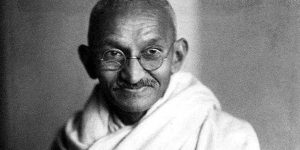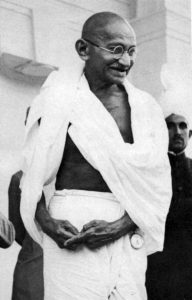
“Kaffirs are as a rule uncivilized – the convicts even more so. They are troublesome, very dirty, and live almost like animals.”
On its own, someone would not readily attribute the quote above to the figure we have all been endeared to and taught to love in world history – Mahatma Gandhi. Kaffir is a word that was used to describe black Africans in South Africa during the apartheid days. It is a literal equivalence of the word ‘nigga’ in America.
In no parts of the literature I read about Gandhi was he made out to a vindictive figure as the quote above implies. He was at all-time depicted as a model of pacifism, a man of virtue, and an overall good guy.
Beneath this façade, one could scarcely guess that the man himself was vindictive, hateful, discriminative, and had a rather condescending and outright racist view of Black Africans whom his quote above described.
Gandhi, prior to his emergence in the colonial Indian political landscape, served as a lawyer in South Africa, which was still under rigid apartheid. Gandhi, who started a family in South Africa, also became a civil rights activist, which ironically, was only directed towards his Indian people.
This is shown in quotes hewn from many of his countless letters to the colonial government bemoaning integration of the kaffirs (Black Africans) with Indians, whom he believed to be superior and deserved more respect.

“There is a by-law in Durban, which requires registration of colored servants. This rule may be and perhaps is necessary for kaffirs who would not work, but absolutely useless with regard to the Indians.”
“Your petitioner has seen the location intended to be used by the Indians. It would place them, who are undoubtedly superior to the kaffirs, in close proximity to the latter.”
“I venture to write you regarding the state of the Indian location… There is, too, a very large kaffir population in the location for which really there is no warrant.”
‘Why, of all places in Johannesburg, the Indian location should be chosen for dumping down all kaffirs of the town passes my comprehension.”
“About this mixing of the kaffirs with the Indians… I think it is very unfair to the Indian population and it is an undue tax on even the proverbial patience of my countrymen.”
He went as far as prohibiting relationships (sexual) between Indians and black women whom he saw as beneath them and hence an impure endeavor to engage in sexual relations with.
“Some Indians do have contacts with kaffir women. I think such contacts are fraught with grave danger. Indians would do well to avoid them altogether.”
His convictions on the superiority of the Indian race was so deep that Gandhi lacked respect or has any validating view for a black man who served as a policeman. He failed to recognize that a kaffir, whom he believed beneath the Indian, should possess any authority over the Indian, even legal authority.
“Are we supposed to be thieves or freebooters that even a kaffir policeman can accost and detain us wherever we happen to be going.”
It would be noted that Indians in apartheid South Africa, was only seen as a little better than Black Africans; hence they were subjected to similar discrimination by the European class. Gandhi, though a firm believer that superiority should be within the European race, believed that the Indians were a close second and should be treated with just as much respect or at least with more respect than the kaffirs whom he described as savages and animalistic.
“A general belief seems to prevail in the colony that the Indians are a little better, if at all, than the savages or the natives of Africa. Even the children are taught to believe in that manner, with the result that the Indian is being dragged down to the position of a raw kaffir.”
“Ours is a continuous struggle against a degradation sought to be inflicted upon us by the Europeans, who desire to degrade us to the level of a raw kaffir whose occupation is hunting, and whose sole ambition is to collect a certain number of cattle to buy a wife with and, then, pass his life in indolence and nakedness.”
In view of these damning truths, one could easily see that what we see in history aren’t necessarily what is true but what those who pass this information want us to see. This can be likened to a painting; an artist only shows you parts of a picture he wants you to see – same principle applies to those who give us the stories of many of those we regard as heroes of civil rights and love. Gandhi was far from the epitome of moralistic virtue; he is being promoted to be. We have seen that despite this façade, he, much like his European masters, had strong resentment for people with black skins.

So, while we seek to immortalize his achievements, we should sweep his failings and his ill thoughts for the black africans under the rug – both can remain parts of his legacy to tell the full story.

